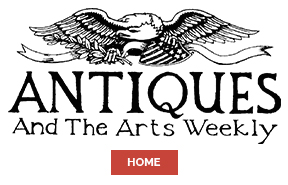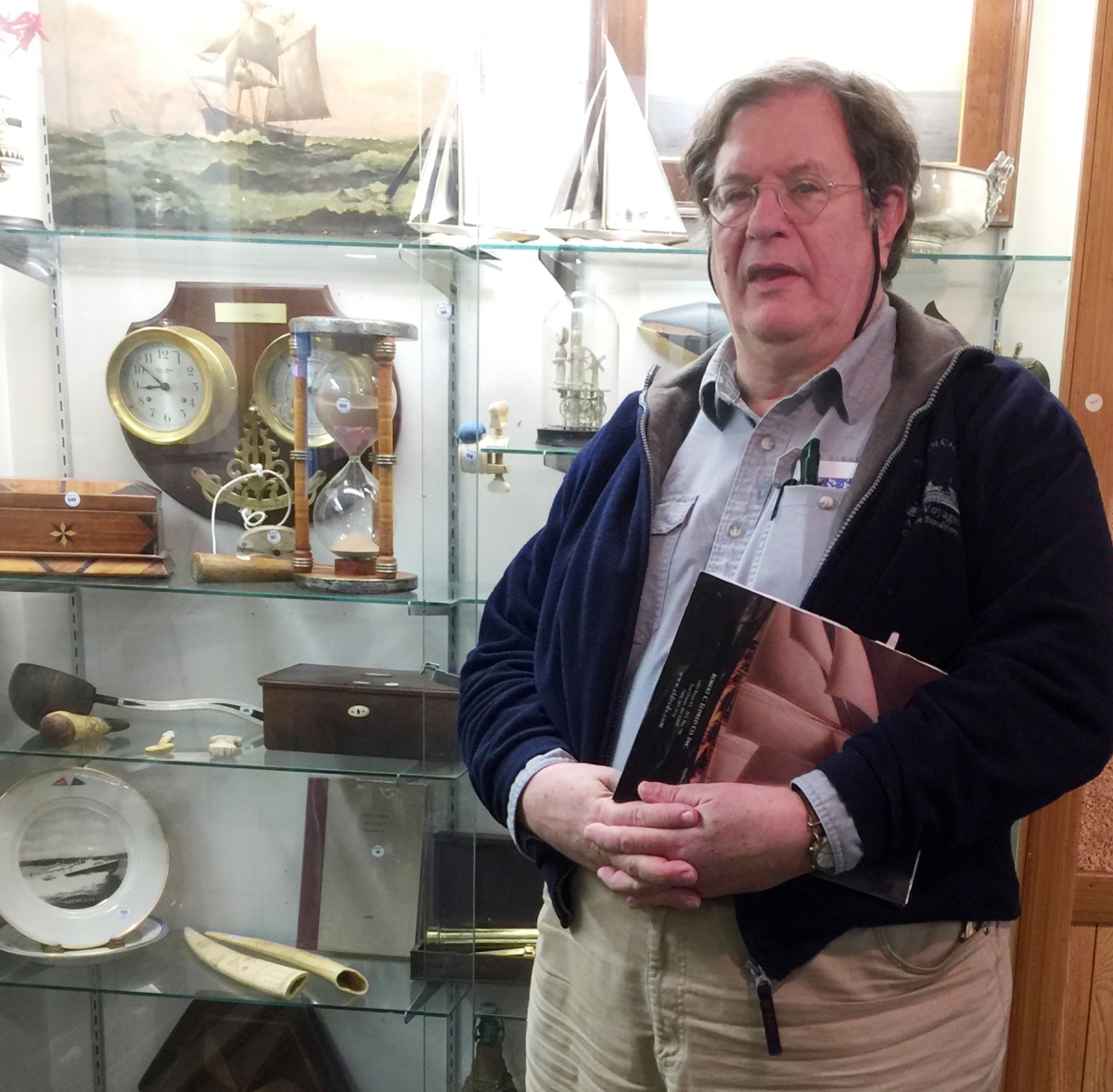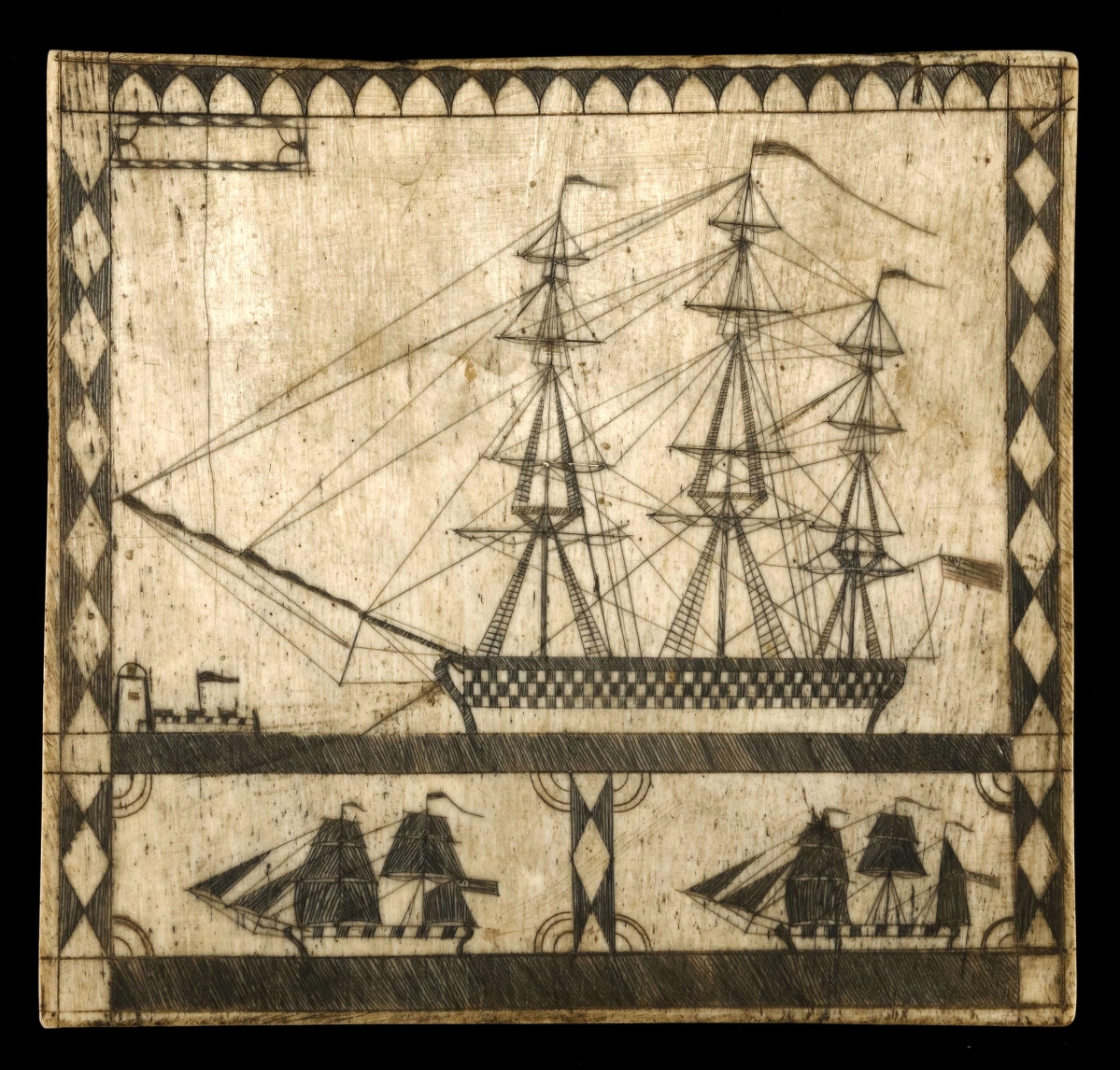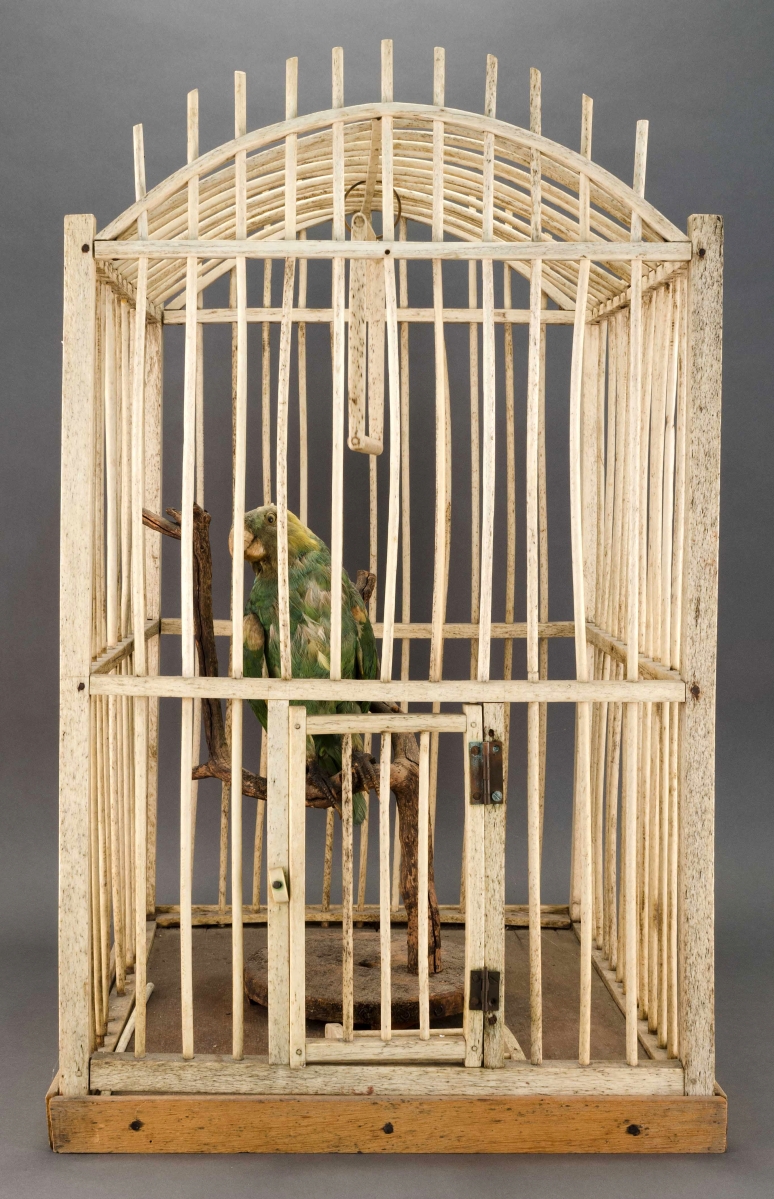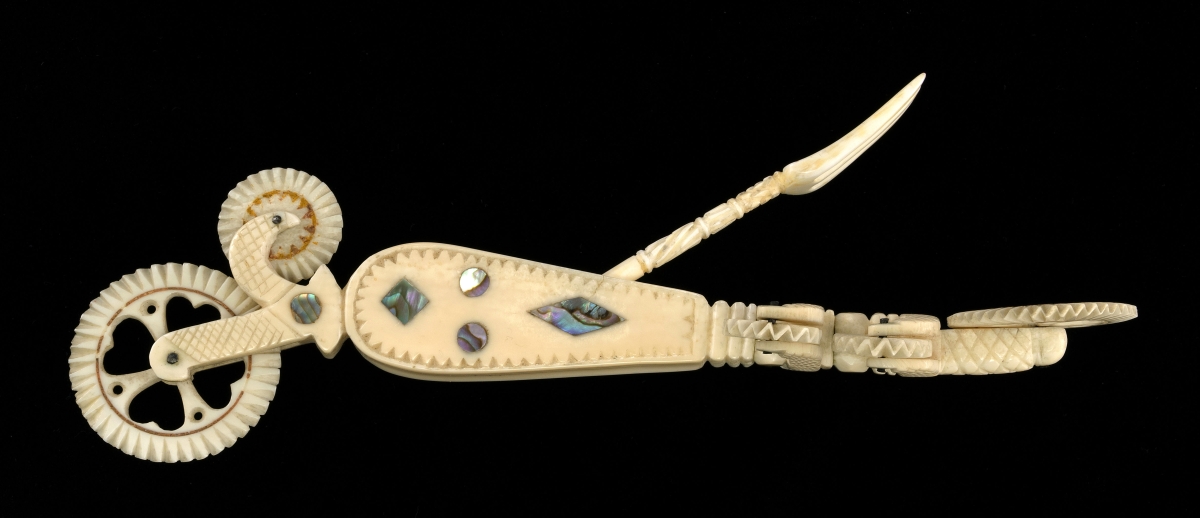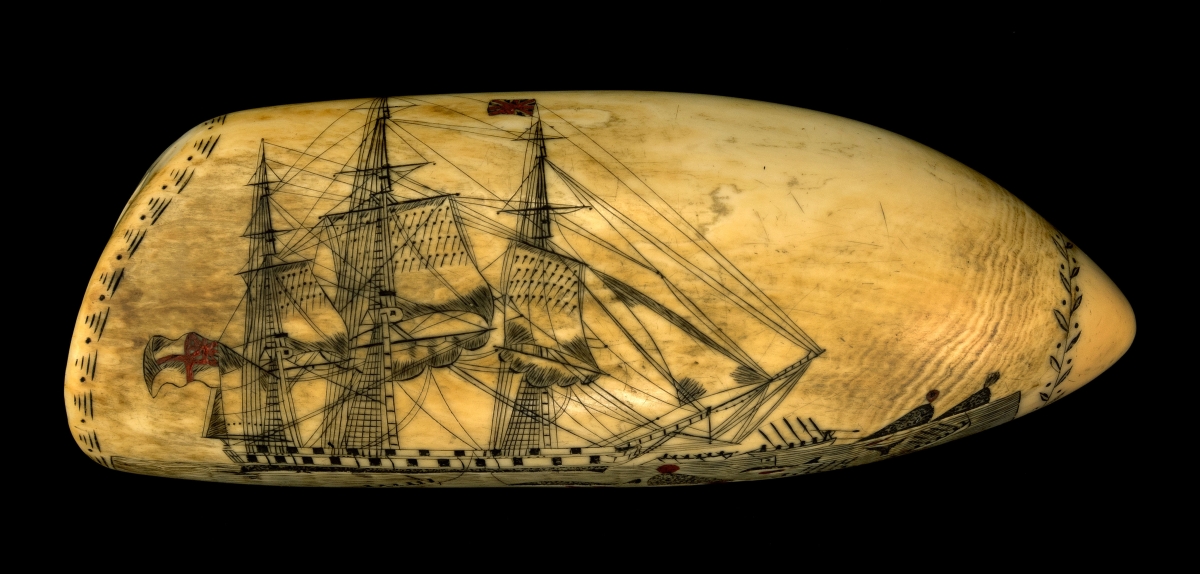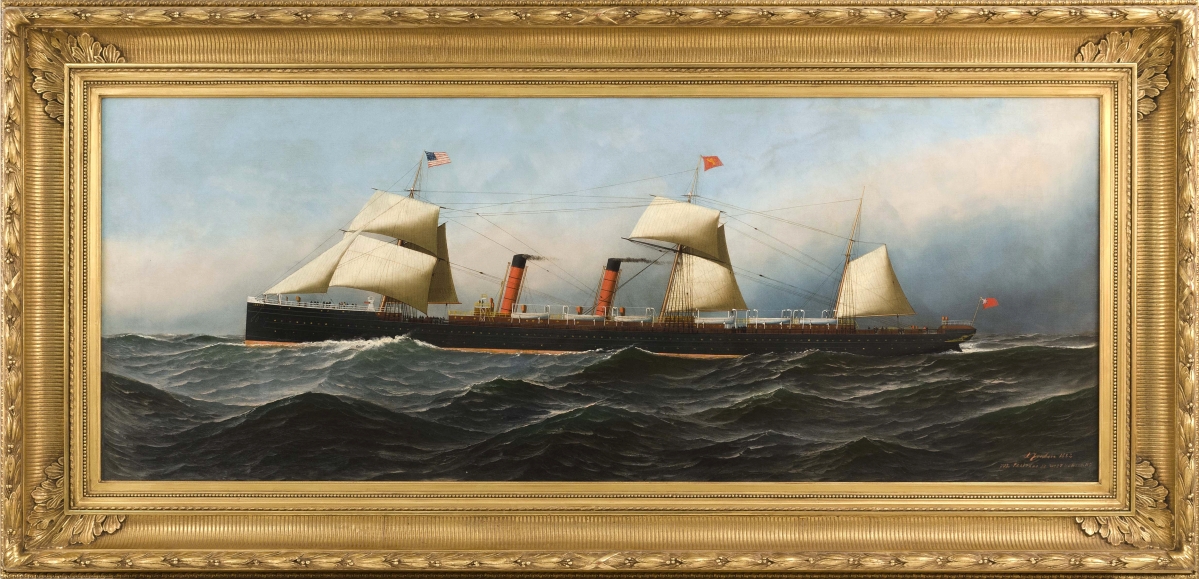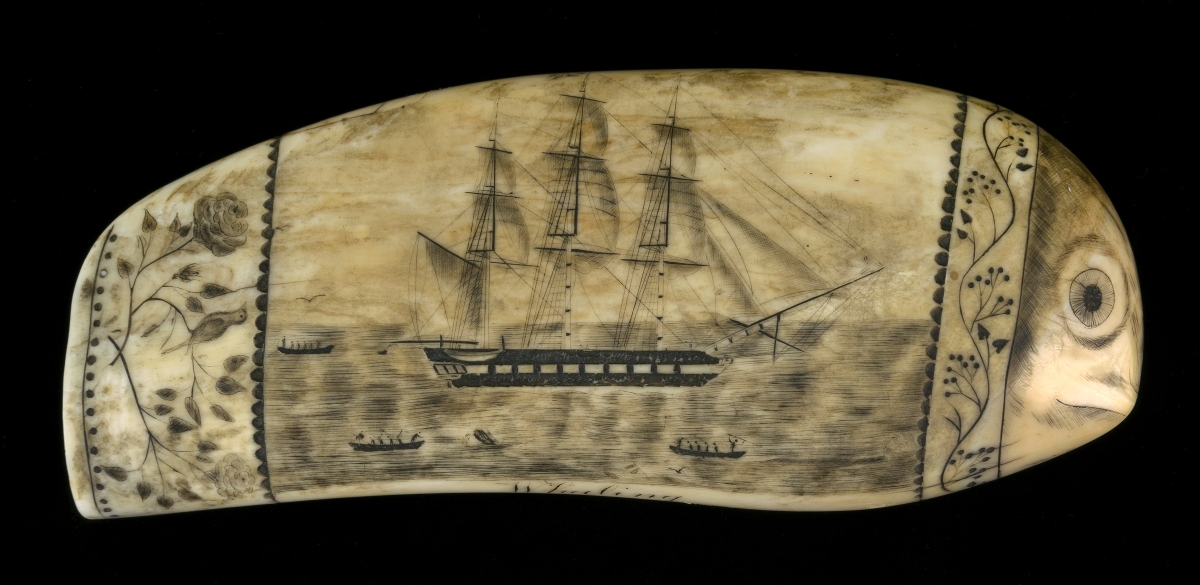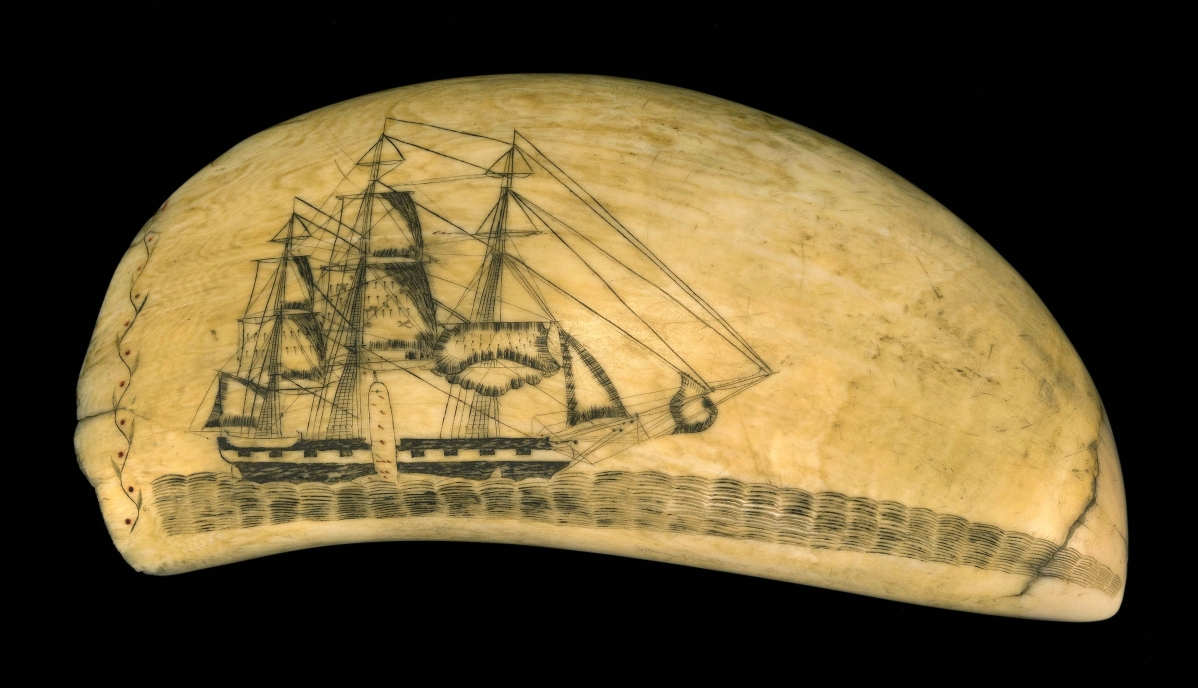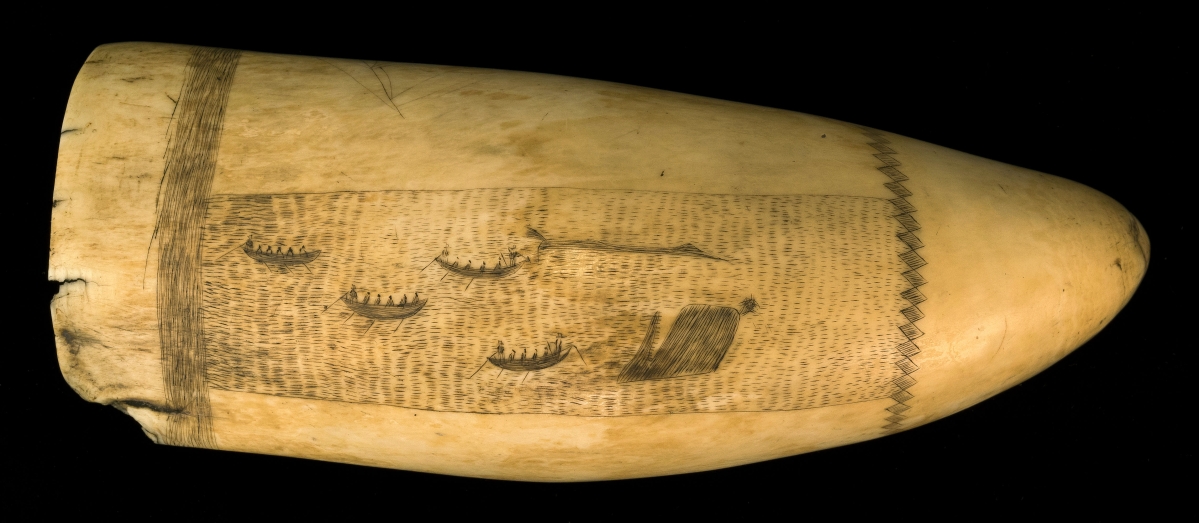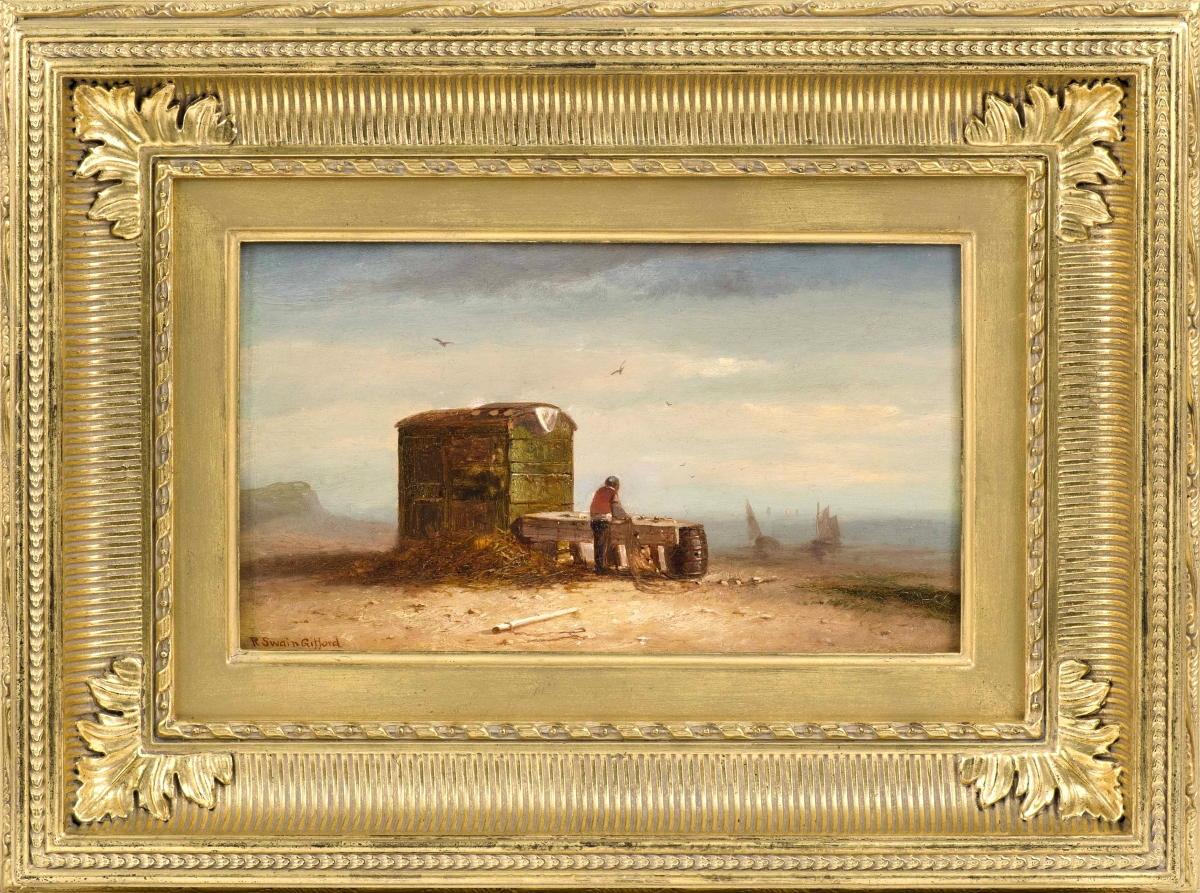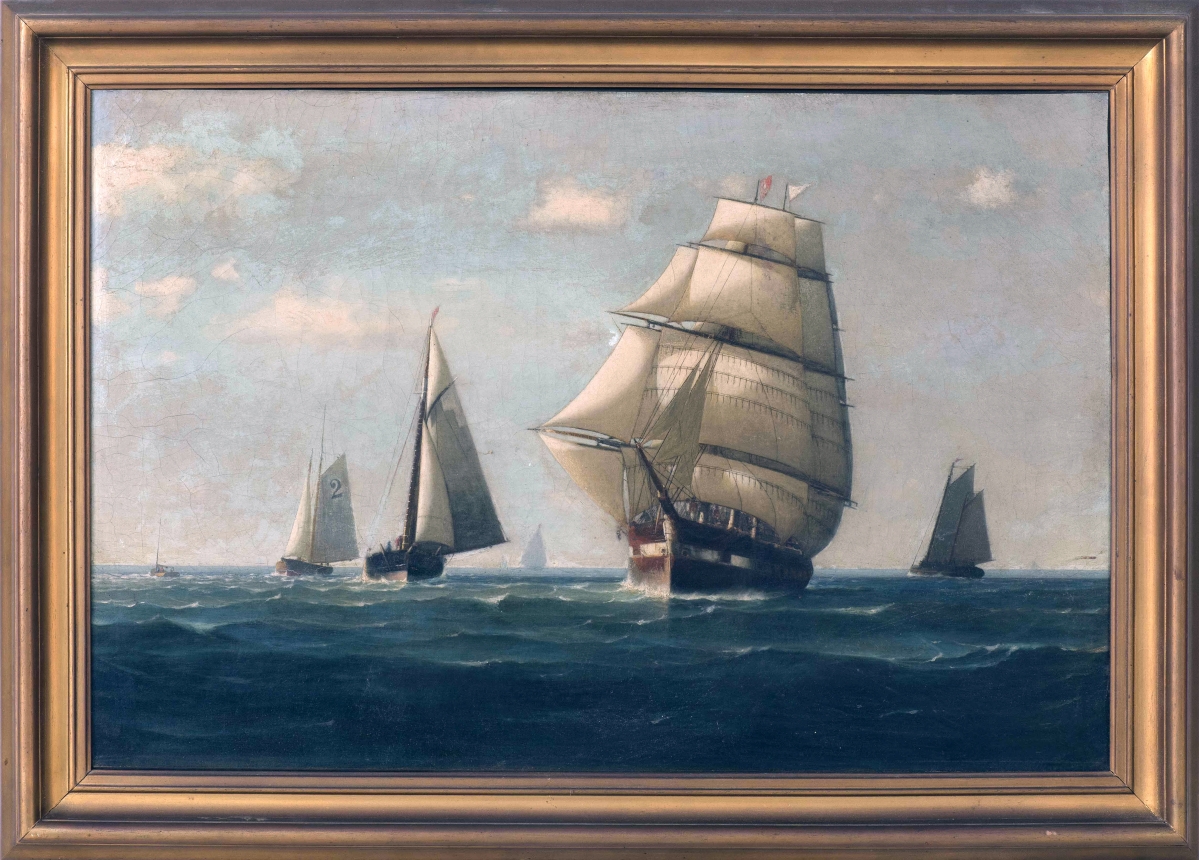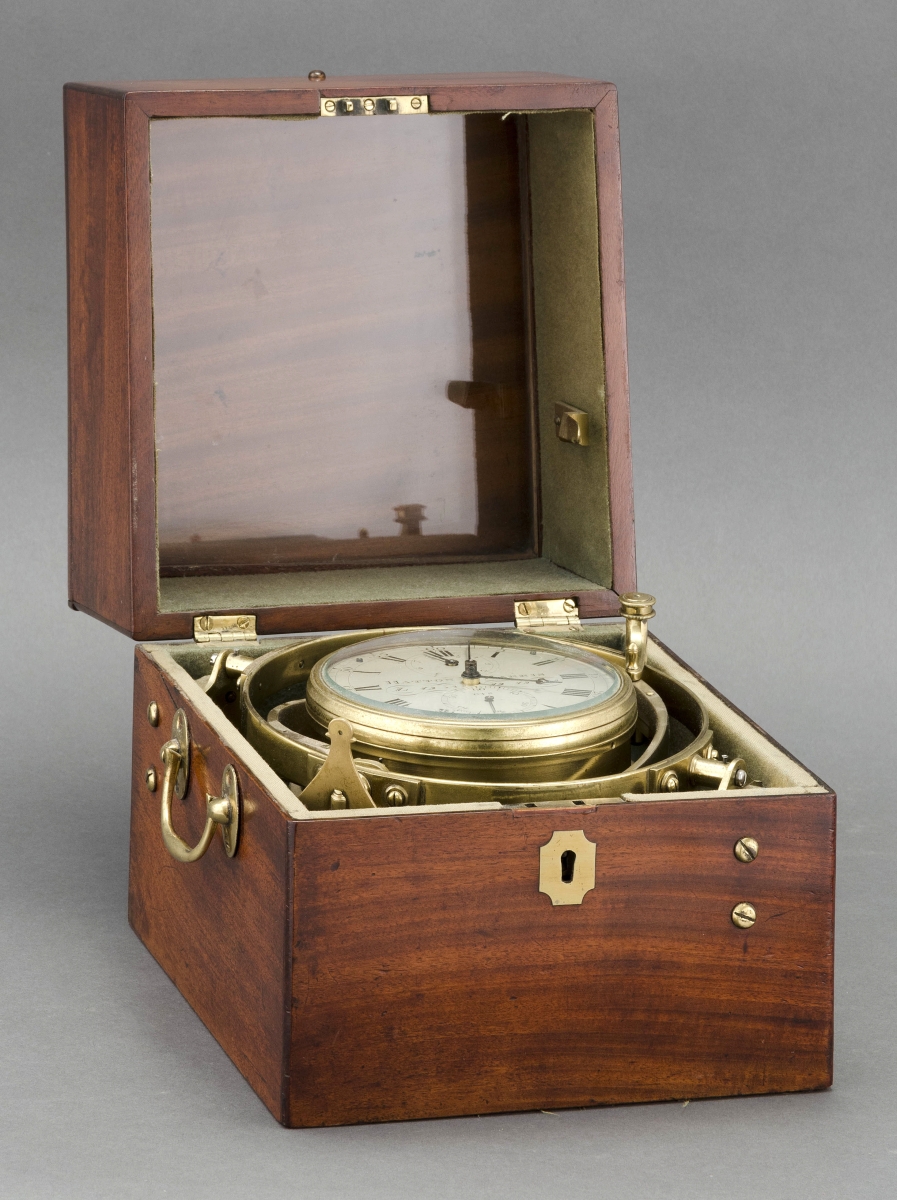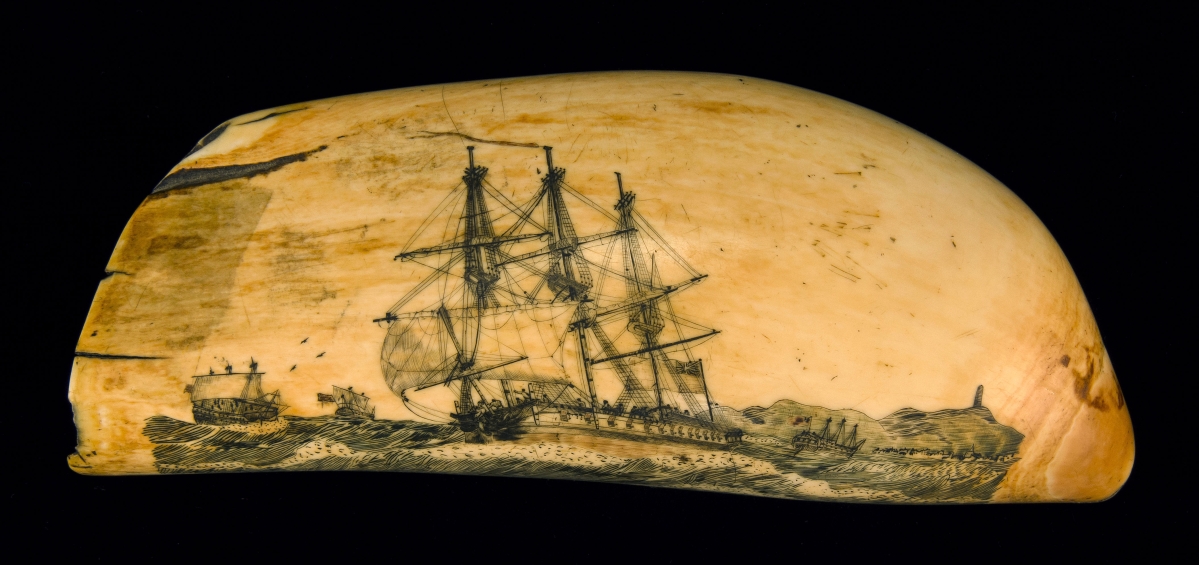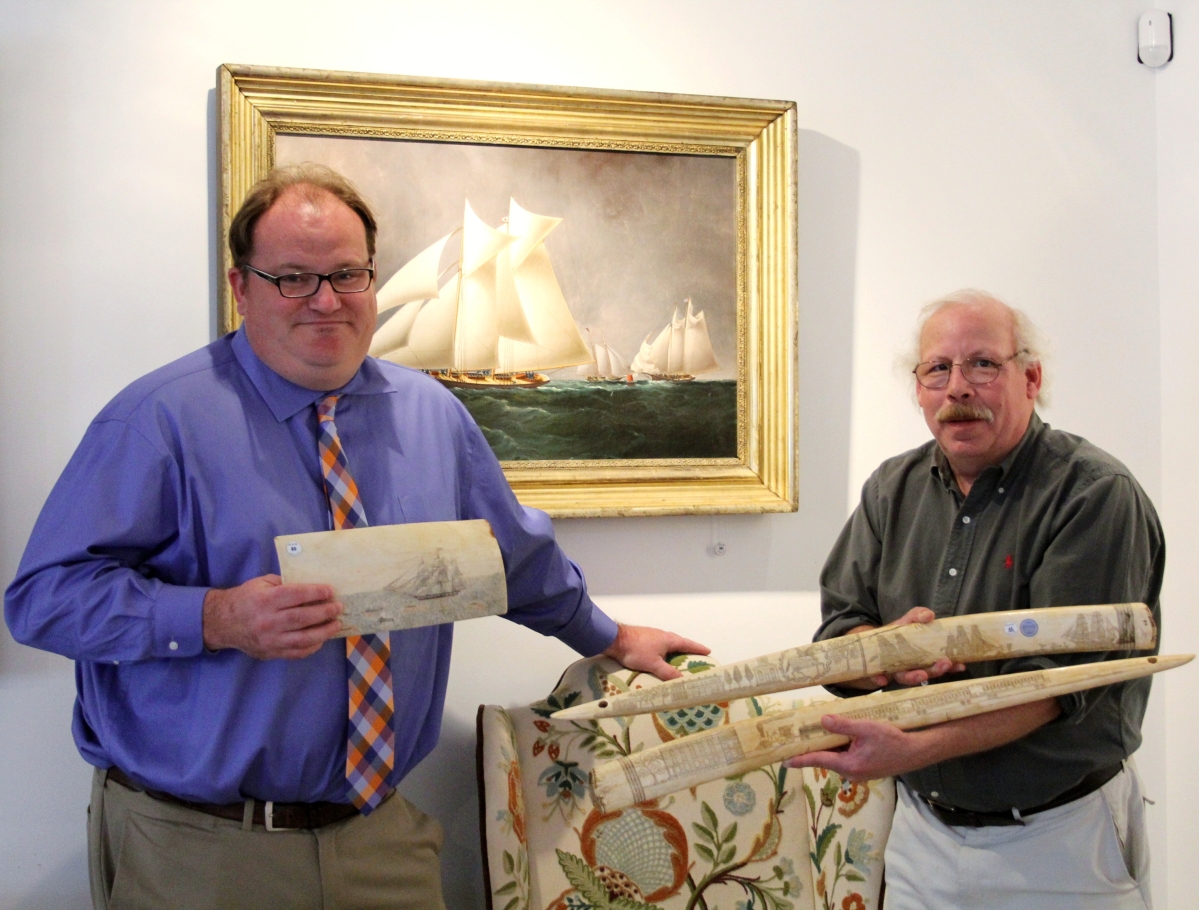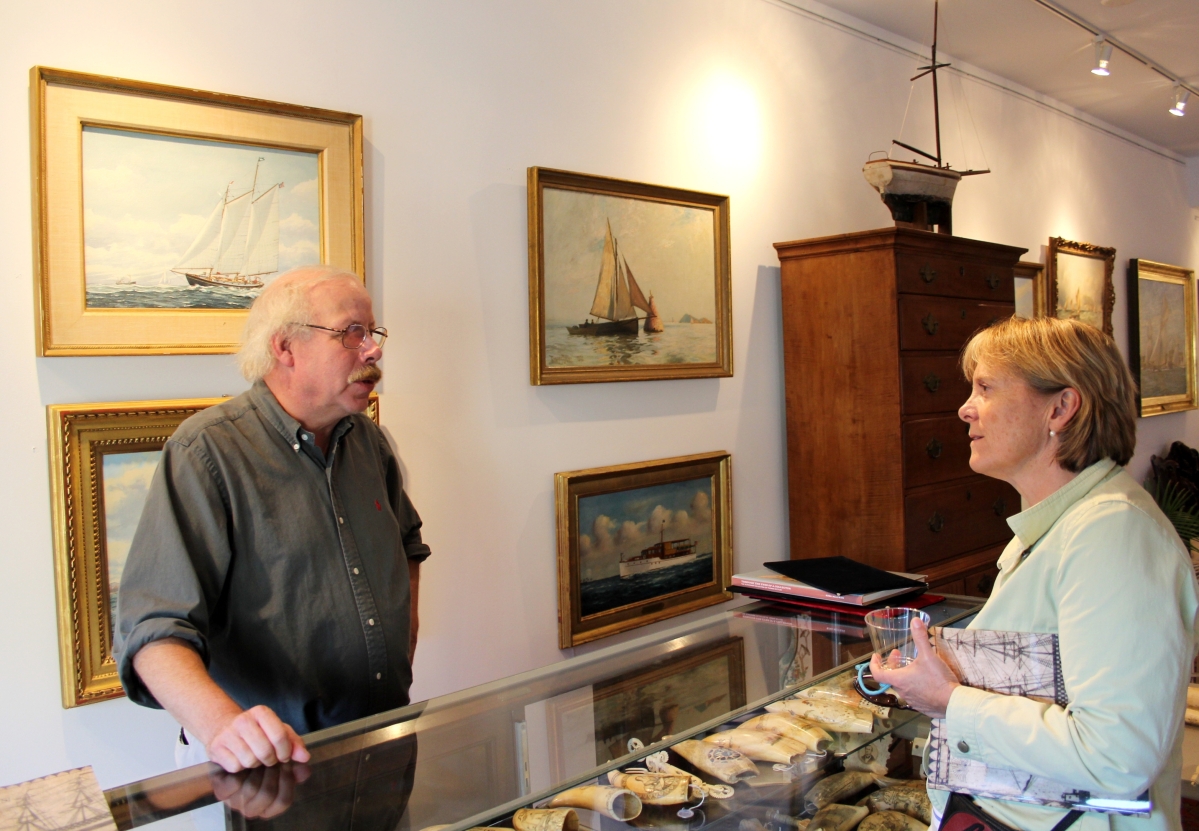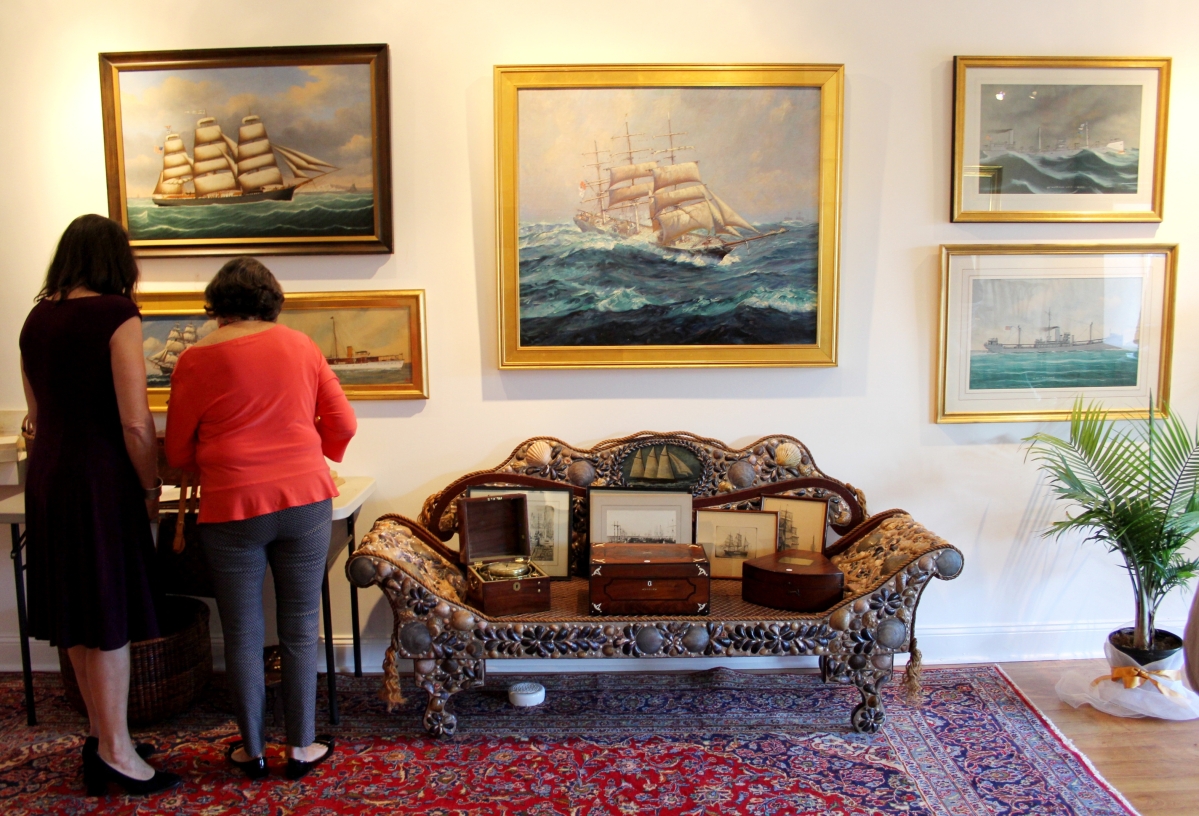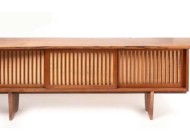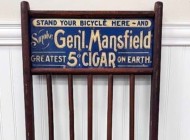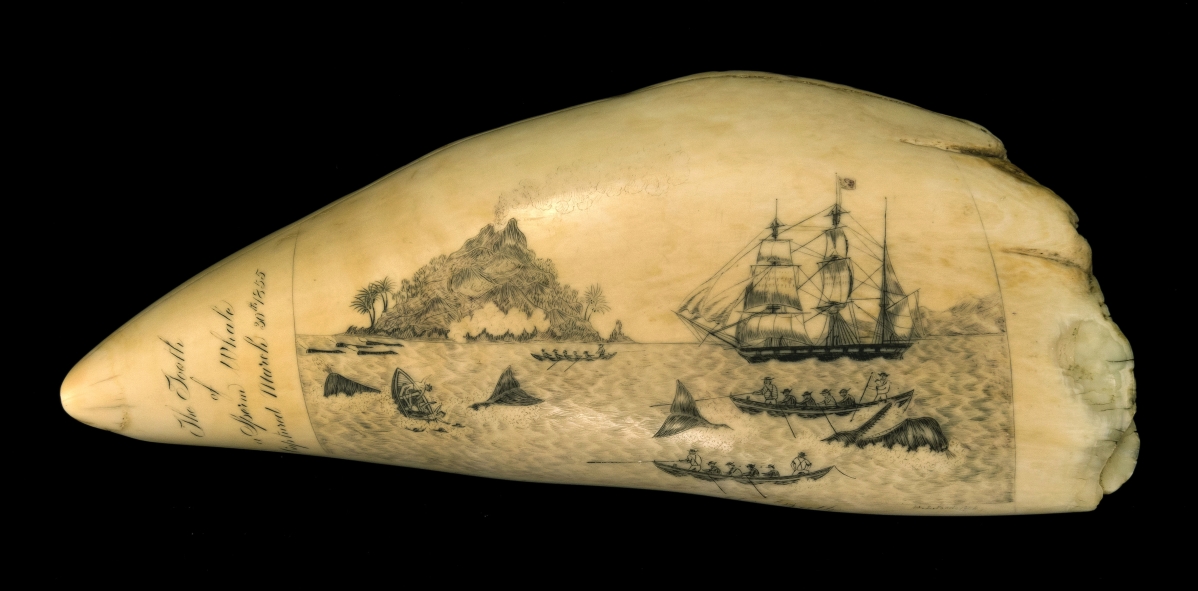
The top lot of the auction was this striking scrimshaw whale’s tooth carved by W.L. Roderick in the mid-Nineteenth Century. Inscribed “In Shore Whaling the Death” along the bottom edge, the carving depicts a detailed whaling scene with a whaleship, four whaleboats and a distant island. The tip of the tooth has the inscription “The Tooth of Sperm Whale Captured March 30, 1855.” It is signed on the lower right “W.L. Roderick.” The estimate of $40/60,000, seemed reasonable. Opening at $30,000, it sold to a buyer at the sale for a powerful $180,000.
Review by Jackie Sideli, Catalog Photos Courtesy Eldred’s
EAST DENNIS, MASS. — The marine art sale at Robert C. Eldred Co., October 15 featured the world-class scrimshaw collection of the late Thomas Mittler, which was the subject of a book by Nantucket dealer Nina Hellman.
Hellman met Mittler at the Winnetka antiques show in Illinois and the renowned dealer helped Mittler build his collection. Said Hellman just prior to the auction, “It should be a very interesting sale.”
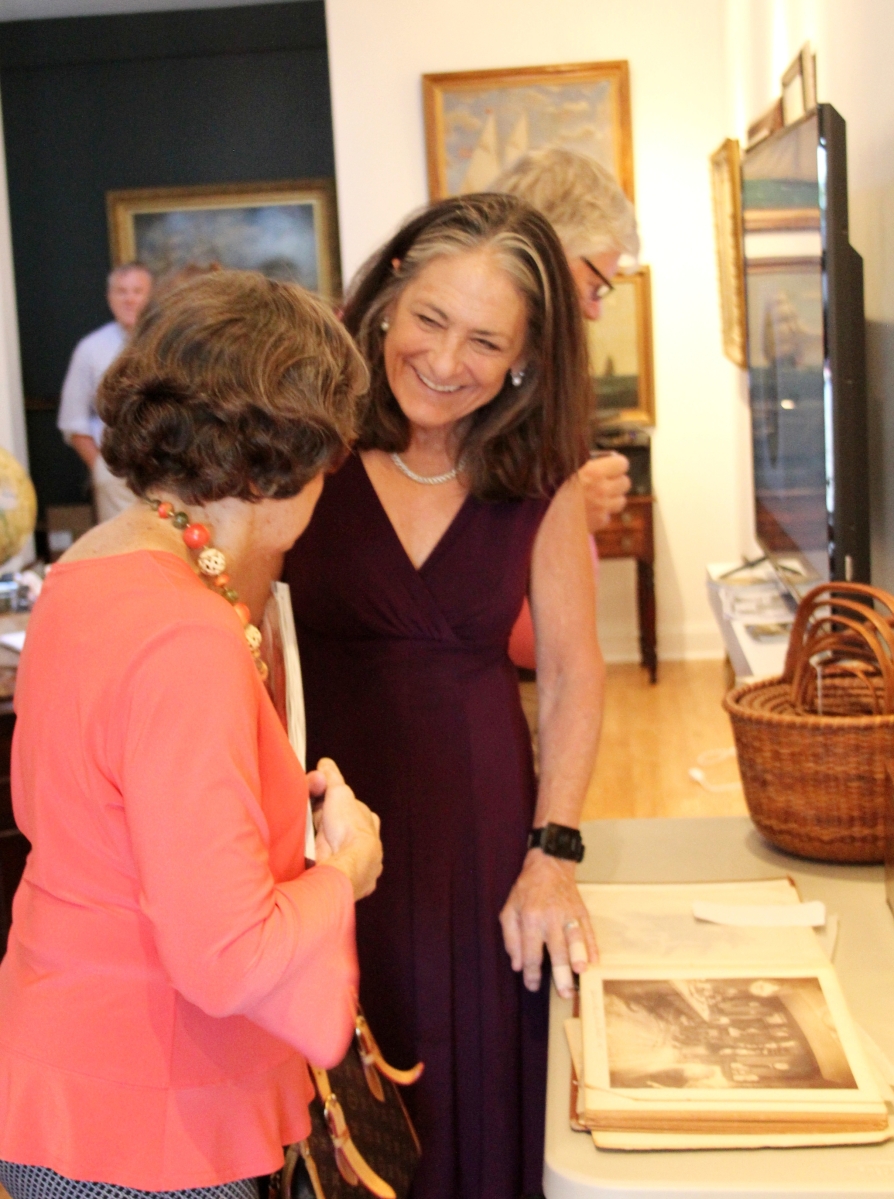
Appraiser and conservator Jennifer Lacker, right, is heading up Eldred’s gallery in Mystic, Conn. She shows a potential bidder yachting memorabilia from the estate of Robert Tiedemann of Newport, R.I. —Laura Beach photo
The auction led off with 60 lots from the Mittler collection; the rest will be sold over two auctions in 2017. This sale also included yachting objects from collector Robert Tiedemann of Newport, R.I., and various owners. In a brief chat with New Bedford Whaling Museum’s curator Stuart Frank just after the auction, Frank said, “Eldred’s did a good job managing the sale. The [Mittler] collection is one of the finest private collections assembled — lots of great stuff. It’s the most important collection to be offered at auction in many years. There are many world-class masterpieces.”
The top lot of the auction was the scrimshaw whale’s tooth, which had been carved by W.L. Roderick in the mid-Nineteenth Century. Beautiful and highly detailed, it was titled “In Shore Whaling the Death.” There is a whaling scene, with a whale ship, four whaleboats and an island in the distance. One stoved whaleboat is throwing the killing lance at the sperm whales. Another whaleboat is engaged in chasing a pod of four whales. The tip of the tooth is engraved “The tooth of a Sperm Whale, Captured March 30, 1855.” Signed lower right “W.L. Roderick,” it is illustrated in Hellman’s book, figure 39. The tooth had a reasonable estimate of $40/60,000. Opening at $30,000, it sold to a customer at the auction for $180,000.
A pair of polychrome whale’s teeth, which dated from the first half of the Nineteenth Century, were sold early in the auction. One tooth is signed “Campbell” and depicts an image of the title page of The Naval Monument, which had been published by A. Bowen in 1816. At the right is a “Washington Independence” monument with numerous American flags. The lower end of this tooth depicts anchors, crossed cannons, cannonballs and a banner inscribed with “We Have Met The Enemy and They Are Ours.” The other tooth depicted a naval encounter between the Constitution and the Guerriere on one side and the Enterprise and the Baxter on the other side. The pair brought a powerful $132,000, significantly higher than the $25/50,000 estimate.
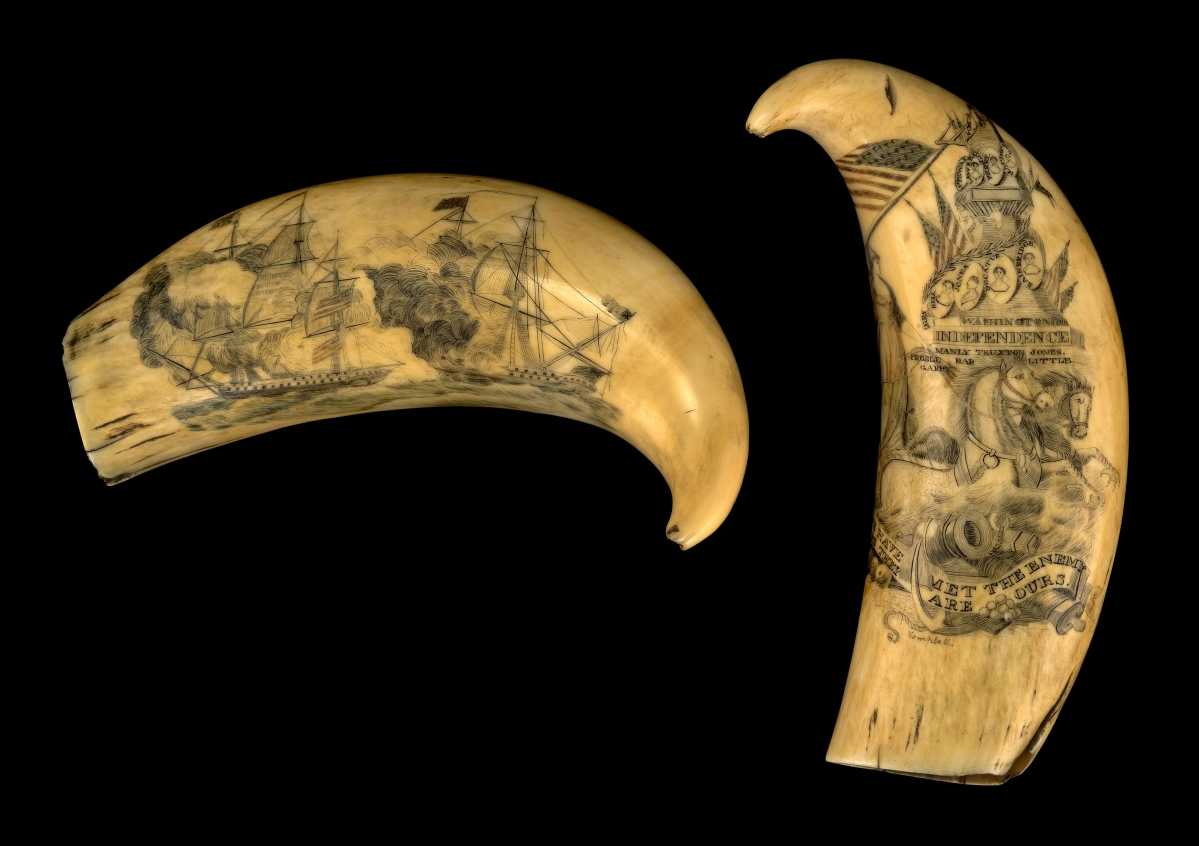
A polychrome pair of scrimshaw whale’s teeth, dating from the first half of the Nineteenth Century was presented early in the auction. One tooth depicts an image from the title pages of The Naval Monument, which was published by A. Bowen in 1816. Liberty stands upon a shell, drawn by two horses. On the right is a Washington Independence monument with numerous American flags. One of the teeth has the inscription “We have met the enemy and they are ours.” The pair are depicted in the Nina Hellman book about this collection, Through the Eyes of a Collector — The Scrimshaw Collection of Thomas Mittler, figure number 58. They had a $25/50,000 estimate, but interest pushed the price to $132,000.
A polychrome scrimshaw whale’s tooth by the Banknote engraver, dating from the mid-Nineteenth Century, was another early offer. An oval cartouche, with a geometric border, showed a woman inside the oval seated at a table. The reverse depicts two whale ships, one in the process of cutting in and suspending a sheet of red blubber. The tooth went for $25,200 to a buyer at the auction.
A whalebone picture frame, 6¼ by 4 inches, a highly unusual form, dated from the third quarter of the Nineteenth Century. In it was displayed a carte de visite of Commodore Andrew Foote. Featured in Flayderman’s book, Scrimshaw and Scrimshanders, figure 220, and Hellman’s book, figure #145, it brought $3,750. A rare whaleman-made birdcage, with whalebone framework and arched roof, fetched $25,200. Mittler once confessed to Hellman that this was his favorite piece. The whalebone cage appeared in Robert Bishop’s book, 1970, published by Dutton titled American Folk Sculpture. It also was illustrated in Flayderman’s book Whales and Whalemen and had a Barbara Johnson provenance.
Also highlighting the Mittler collection was a pair of polychrome scrimshaw whale teeth attributed to Manuel Enos, mid-Nineteenth Century, that tripled high estimate to take $120,000. One tooth depicted a young woman holding flowers, while the other showed two women in lavish Victorian garb. The work of Enos, a Long Island, N.Y., whaleman, seldom appears on the market.
From the various owners portion of the sale came a portrait of the steamship SS Servia by Antonio Jacobsen with a highly detailed deck, rigging and hull, complete with figures on the deck, going for $22,800; an oil on canvas by marine painter William Pierce Stubbs (1842–1909) signed lower left, depicting a yacht and a steam vessel in rough sea, with dark clouds, that sold for $5,700; and a painting by Fairhaven, Mass., artist Charles Henry Gifford of the New Bedford Harbor, signed and dated “Charles H Gifford 1900” that achieved $3,900.
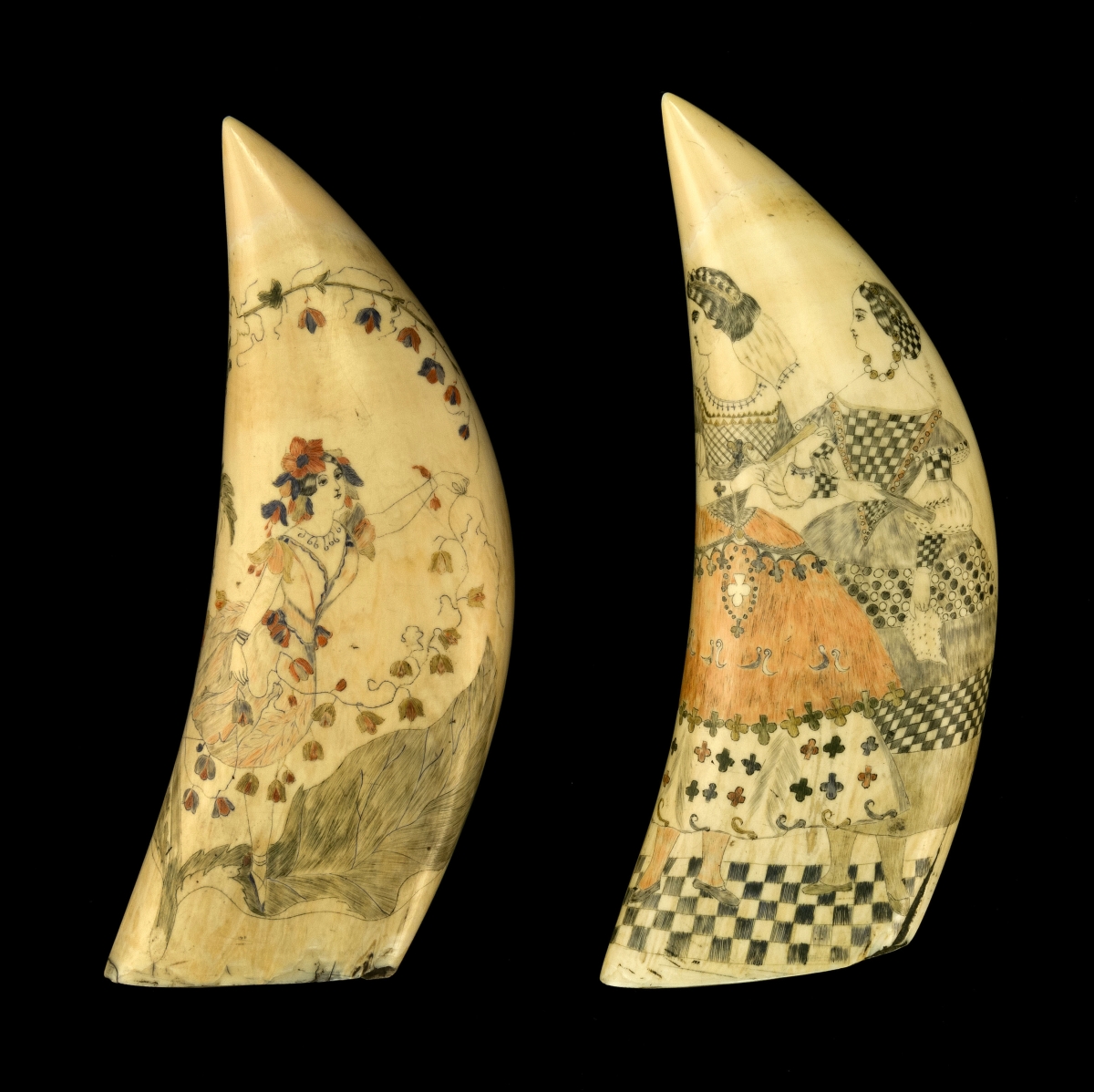
This outstanding pair of polychrome scrimshaw whale’s teeth, attributed to Manuel Enos and dated from the mid-Nineteenth Century, was offered early in the auction. One tooth is a depiction of a young woman holding a garland of flowers, and there are several insects on branches. The second tooth depicts two women in elaborate Victorian garb. There was a cautious estimate on the teeth of $30/40,000, but interest from the auction hall, the phone and the internet pushed the price to $120,000.
A scarce and historically interesting silver presentation travel cup, which belonged to naval officer “Mad Jack” Percival, when he was captain of the USS Constitution, on the only circumnavigation the ship ever made, sold for $12,000.
Bourne noted the sale drew many phone bids. “Tom had the guidance of the Hellmans — they became the compass [for Mittler] but he developed his own eye,” he said.
Dealer Alan Granby said this auction will be looked at as “one of the great sales for scrimshaw — I had a client here from ‘south of New York.’ There’s lots of competition from the floor and the phone — it’s not just two people. The pie crimpers were a bargain — everything that wasn’t teeth sold reasonably. The law has changed rather recently. Just two years ago I had people calling me wanting to ‘dump’ their collections of scrimshaw.”
The auction was, by anyone’s standards, a huge runaway success. There was a palpable excitement in the room, and bidders were eager to buy and they did. The Eldred’s staff did a phenomenal job of managing a huge amount of historically significant material seamlessly.
All prices reported include the buyer’s premium.
For additional information, www.eldreds.com or 508-385-3116.
